Sean Keating PPRHA HRA HRSA (1889-1977) Flat Calm Oil on board, 47 x 60cm, (18.5 x 23.6") Signed Provenance: Dermot Kinlen, His sale, The Kinlen Collection, these rooms, 28th May, 2008, lot 22 where purchased by the present owner Exhibited: Limerick, Hunt Museum, June 2009, Sean Keating in Focus The composition is a twofold one, often essayed by the artist in that the main concentration is on the boat moored off the quay, and the second part is the watchers. The latter is so typical of the artist in that his western seaboard paintings are those of the people looking on or watching an event, often out of the sight of the viewer but immanent in the idea of the composition. The boat which is a púcán or a glóthóg is a kind of open decked craft developed in the west of Ireland as a general cargo carrier. They were used all round the small islands of south Connemara to bring supplies to the smaller clachans or villages notably around Maoinish and other islands, as well as the three Aran Islands. They were most in use to bring peat (turf) to Aran which has no natural supply of it’s own, so the whole business of moving the peat cargo and it’s loading and unloading provide many artists but notably Keating with an opportunity to make splendid works out their observations on the important not to say vital business of moving and transporting peat by sea to the Islands. In this work the tide as receded so the boat at anchor has dropped below the point at which the cargo can continue to be unloaded, although it seems as if most of it has already been moved ashore but some still remains in the hold. The Glóthóg is moving sluggishly in the tidal outflow awaiting the next incoming tide to lift it back up and there is as the title suggests not a breath of wind, which will of course change with the tidal changes. The limpid waters of the natural and built harbours of Cill Murbhí on Inis Mór are typical of Keating at his best in observing the tidal phenomenon of the Atlantic shoreline and one can see why long after Keating that the film maker Robert Flaherty was also drawn to the area to make his great epic Man of Aran, filled with grand and heroic images. Adjoining the quay at Cill Murbhí, Flaherty built himself a house for the purposes of filming the Aran epic and repaired and restored the older quay structures to accommodate the fleet of Hookers (Púcáns & Glóthógs) which he filmed to such great effect. This work is pre Flaherty and painted probably in the early 1920s. It was exhibited in the Keating retrospective held in the RHA Gallagher Gallery 1989 curated by Dr.Thomas Ryan PRHA, and the catalogue from that exhibition is a comparative rarity for collectors. This is a great work filled with the best of Keating’s signature gestures of depth of pigment, terrific human observation and the arrestation of a moment in time, of a civilisation now long vanished but here immortalised by the artist. Ciarán MacGonigal
Sean Keating PPRHA HRA HRSA (1889-1977) Flat Calm Oil on board, 47 x 60cm, (18.5 x 23.6") Signed Provenance: Dermot Kinlen, His sale, The Kinlen Collection, these rooms, 28th May, 2008, lot 22 where purchased by the present owner Exhibited: Limerick, Hunt Museum, June 2009, Sean Keating in Focus The composition is a twofold one, often essayed by the artist in that the main concentration is on the boat moored off the quay, and the second part is the watchers. The latter is so typical of the artist in that his western seaboard paintings are those of the people looking on or watching an event, often out of the sight of the viewer but immanent in the idea of the composition. The boat which is a púcán or a glóthóg is a kind of open decked craft developed in the west of Ireland as a general cargo carrier. They were used all round the small islands of south Connemara to bring supplies to the smaller clachans or villages notably around Maoinish and other islands, as well as the three Aran Islands. They were most in use to bring peat (turf) to Aran which has no natural supply of it’s own, so the whole business of moving the peat cargo and it’s loading and unloading provide many artists but notably Keating with an opportunity to make splendid works out their observations on the important not to say vital business of moving and transporting peat by sea to the Islands. In this work the tide as receded so the boat at anchor has dropped below the point at which the cargo can continue to be unloaded, although it seems as if most of it has already been moved ashore but some still remains in the hold. The Glóthóg is moving sluggishly in the tidal outflow awaiting the next incoming tide to lift it back up and there is as the title suggests not a breath of wind, which will of course change with the tidal changes. The limpid waters of the natural and built harbours of Cill Murbhí on Inis Mór are typical of Keating at his best in observing the tidal phenomenon of the Atlantic shoreline and one can see why long after Keating that the film maker Robert Flaherty was also drawn to the area to make his great epic Man of Aran, filled with grand and heroic images. Adjoining the quay at Cill Murbhí, Flaherty built himself a house for the purposes of filming the Aran epic and repaired and restored the older quay structures to accommodate the fleet of Hookers (Púcáns & Glóthógs) which he filmed to such great effect. This work is pre Flaherty and painted probably in the early 1920s. It was exhibited in the Keating retrospective held in the RHA Gallagher Gallery 1989 curated by Dr.Thomas Ryan PRHA, and the catalogue from that exhibition is a comparative rarity for collectors. This is a great work filled with the best of Keating’s signature gestures of depth of pigment, terrific human observation and the arrestation of a moment in time, of a civilisation now long vanished but here immortalised by the artist. Ciarán MacGonigal
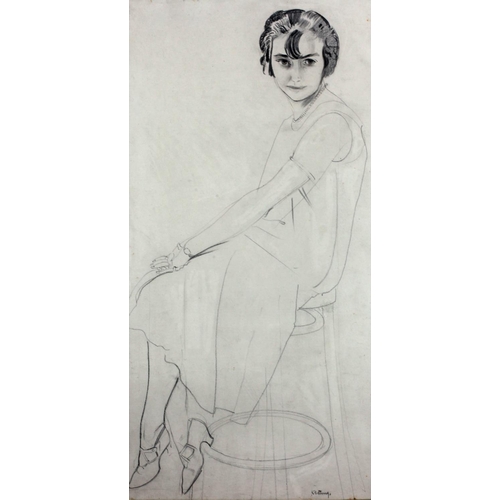
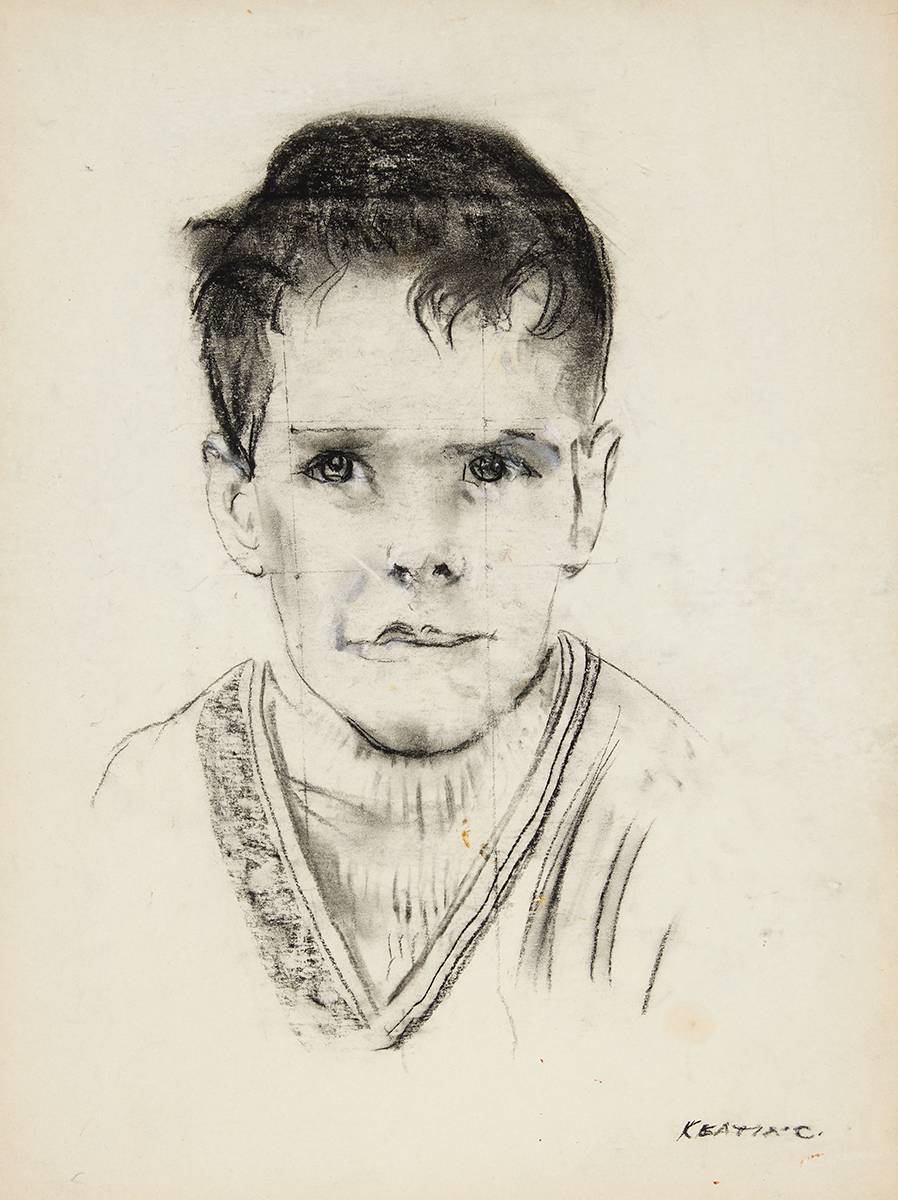
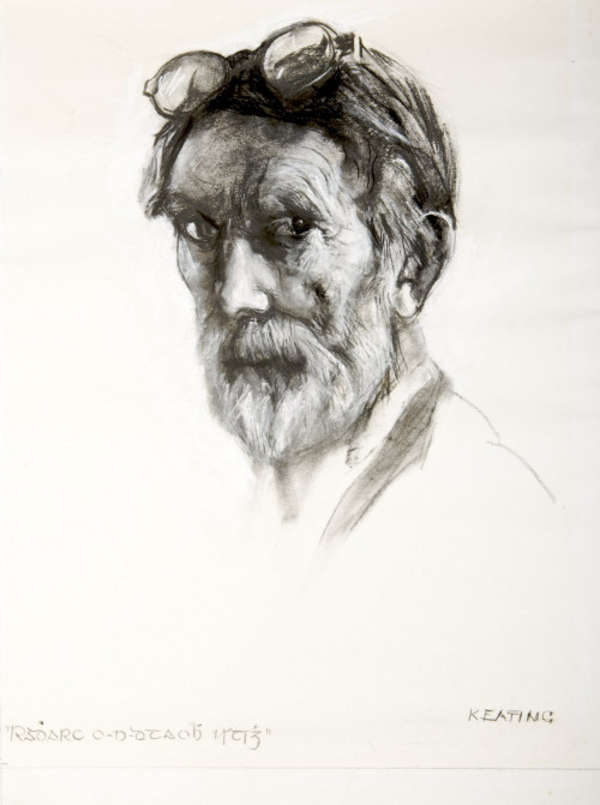
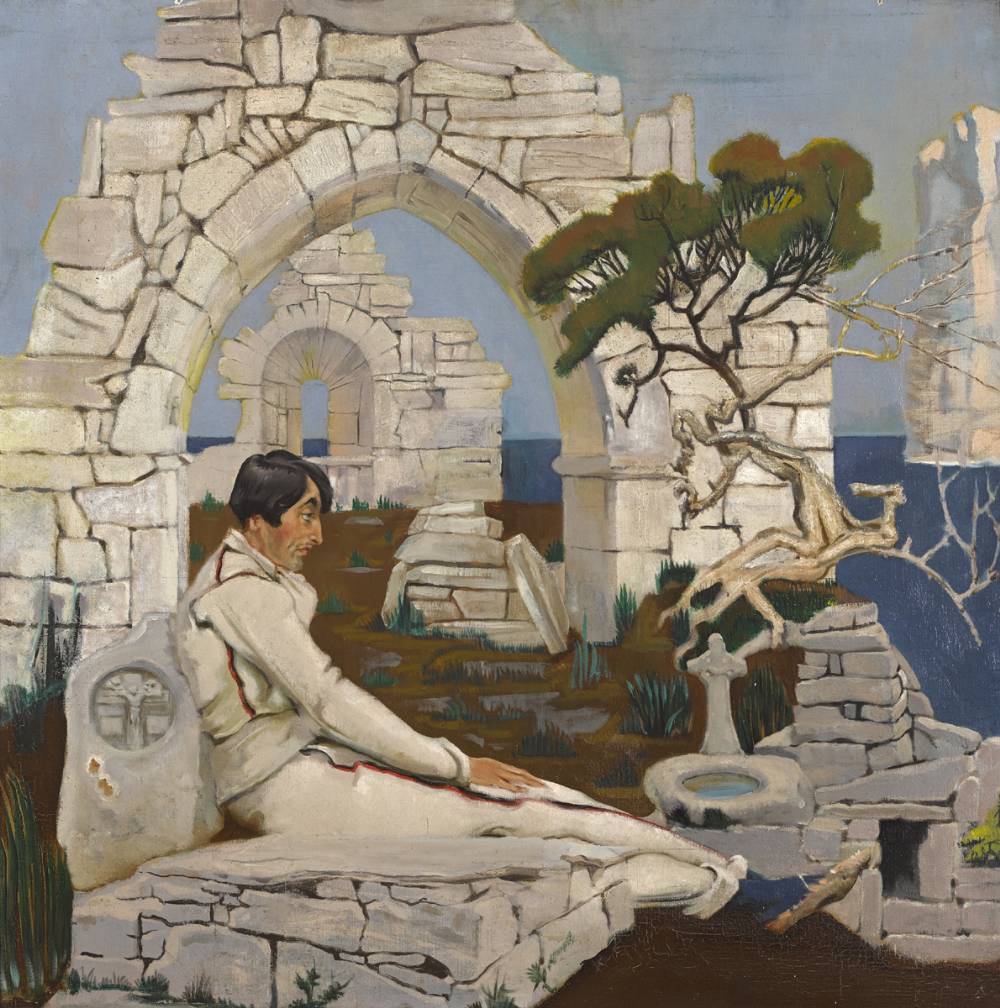
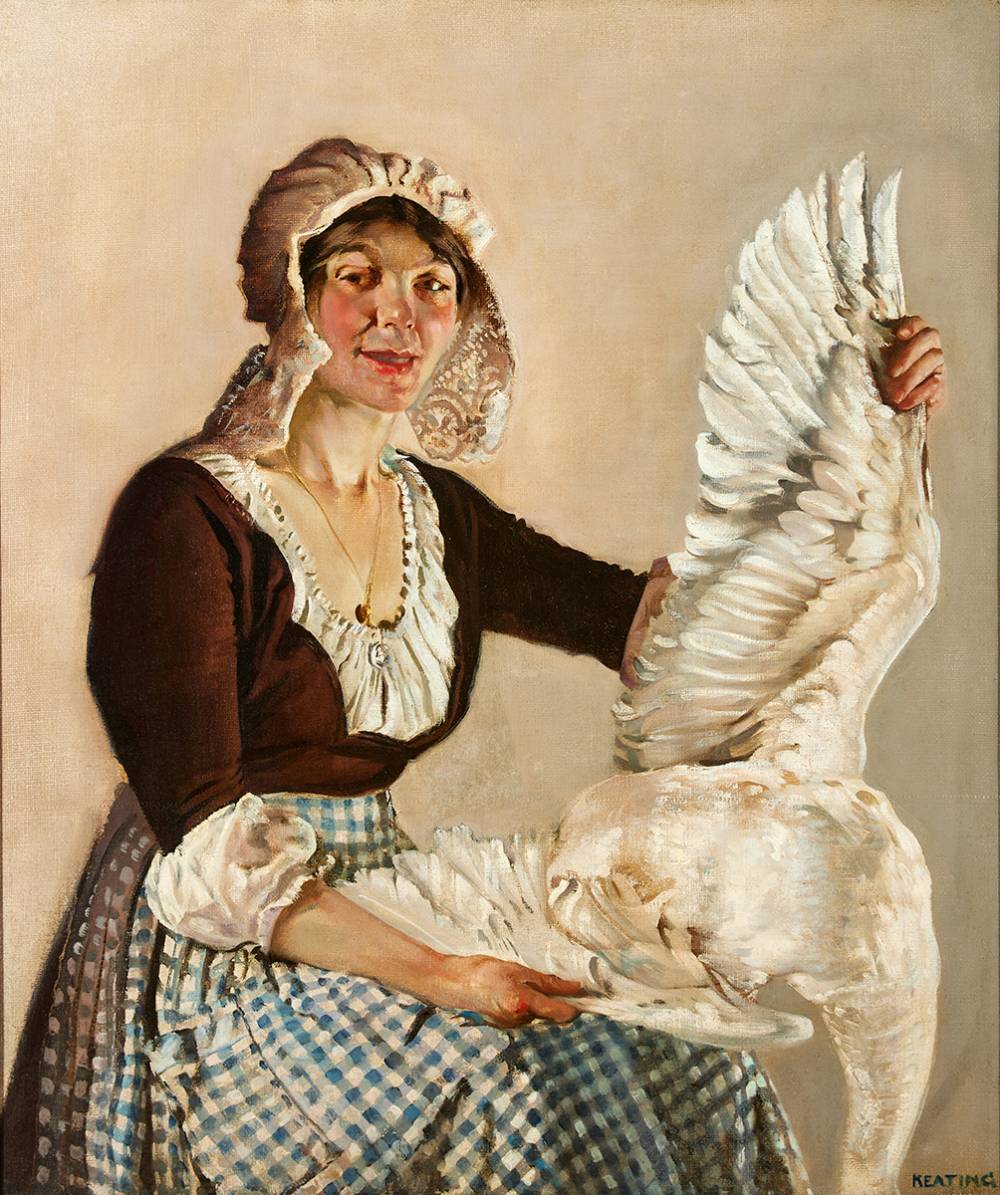
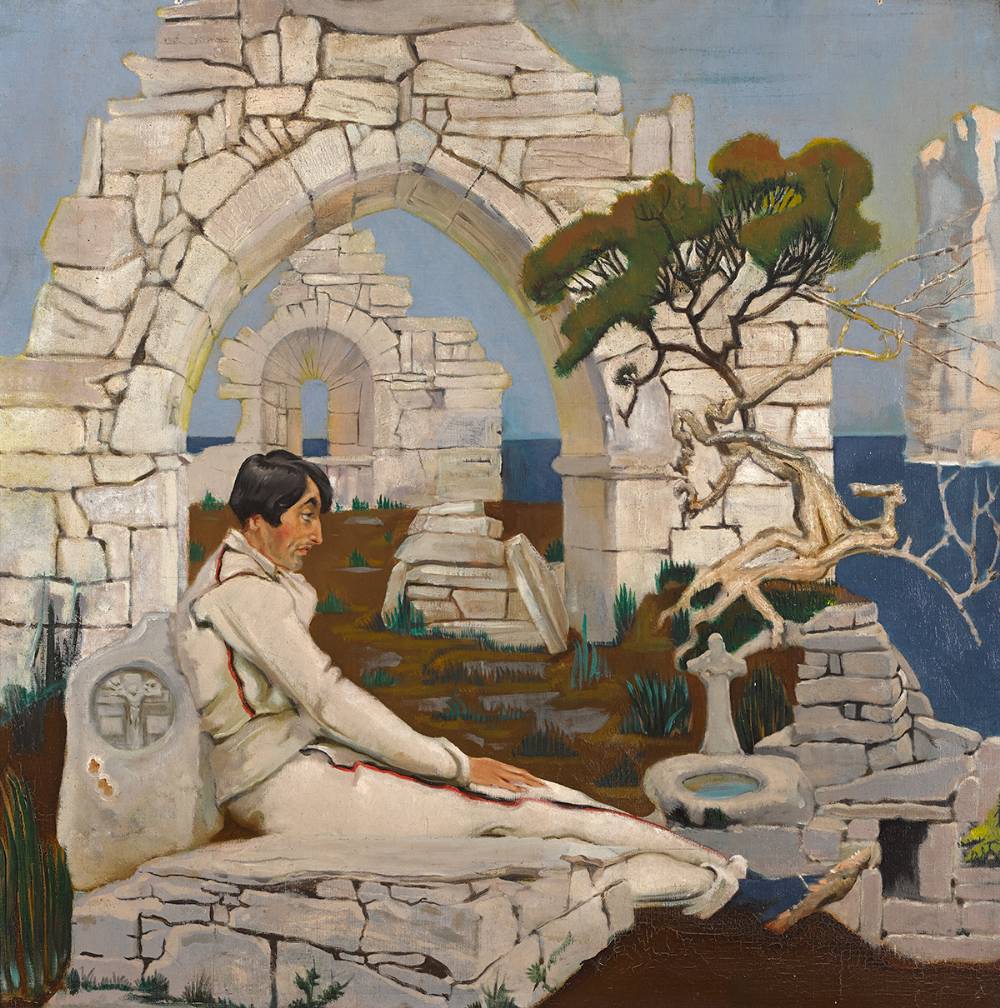
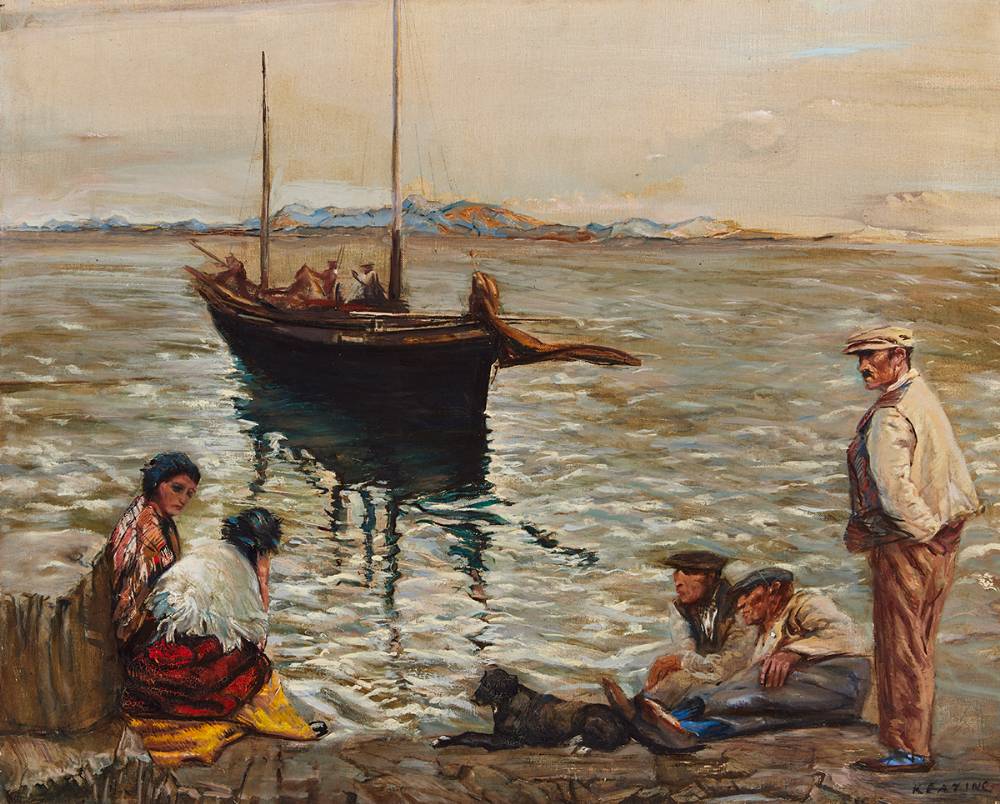
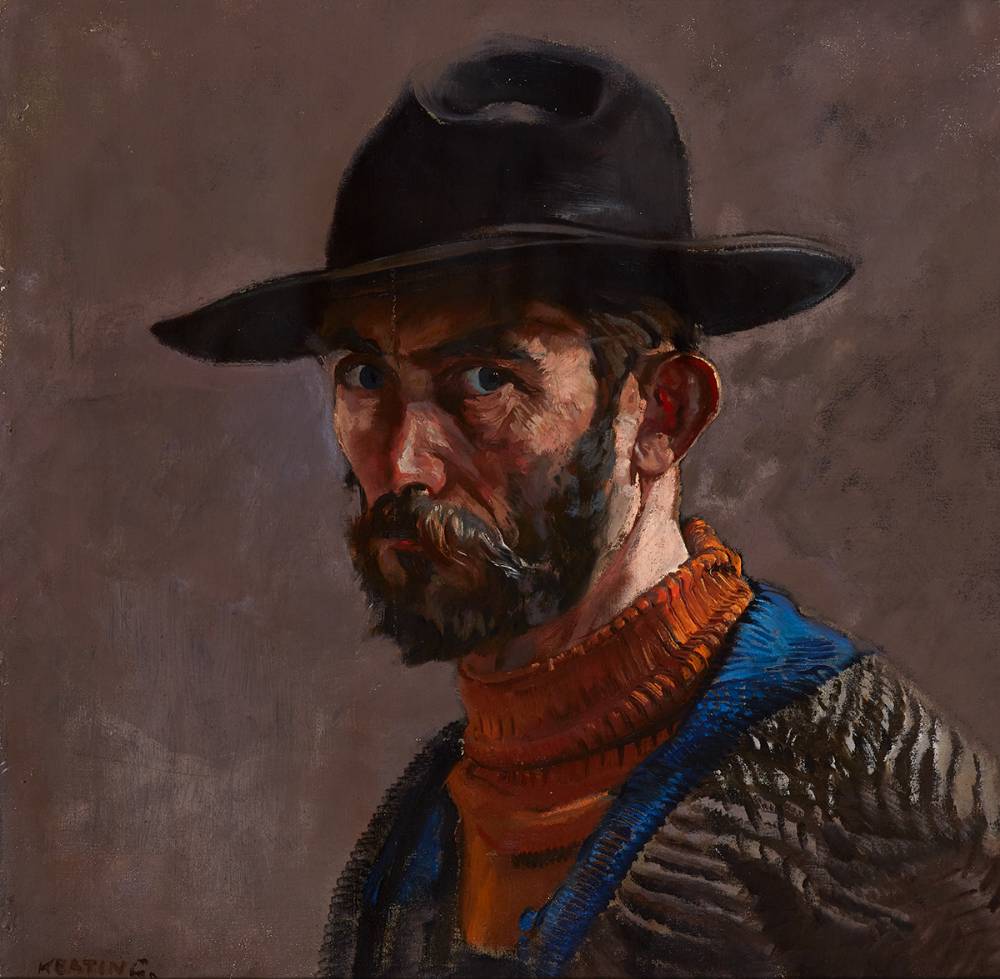
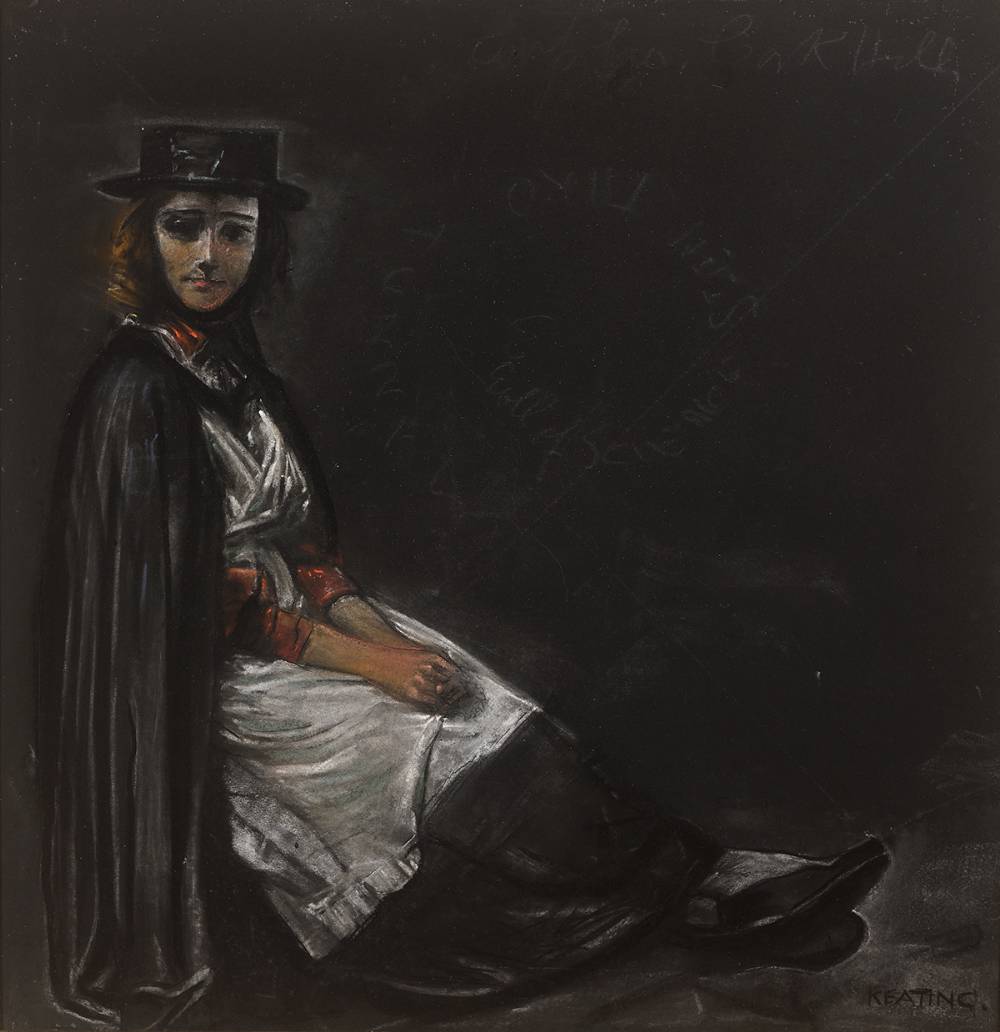


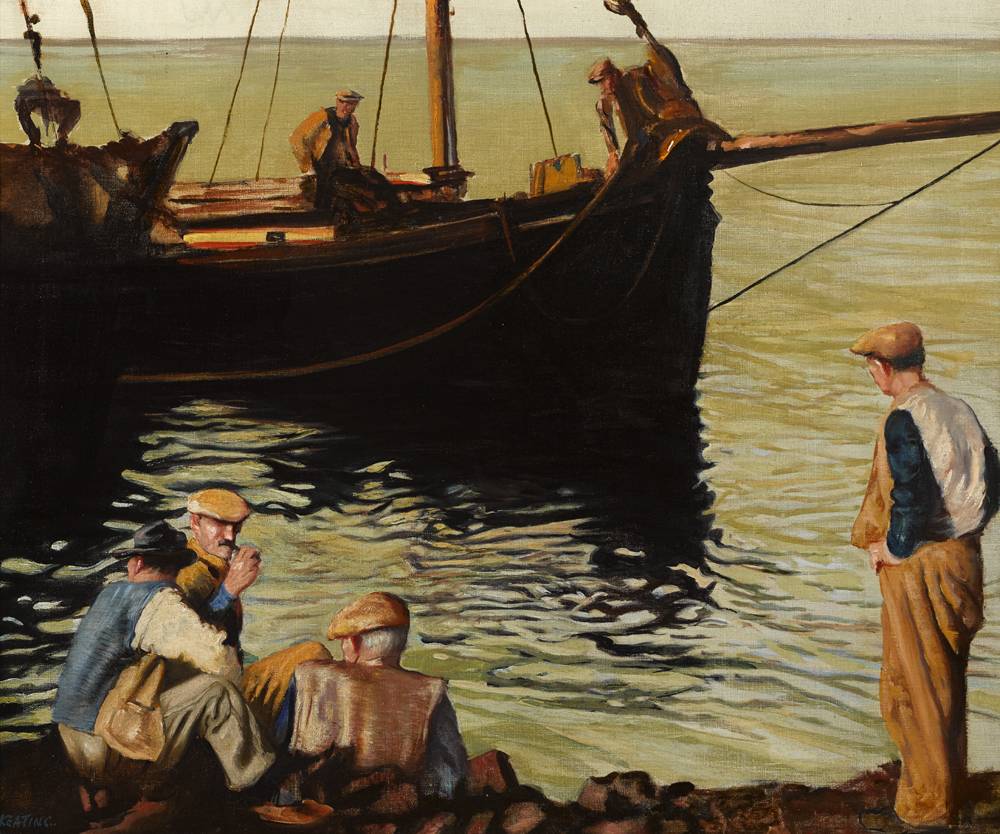
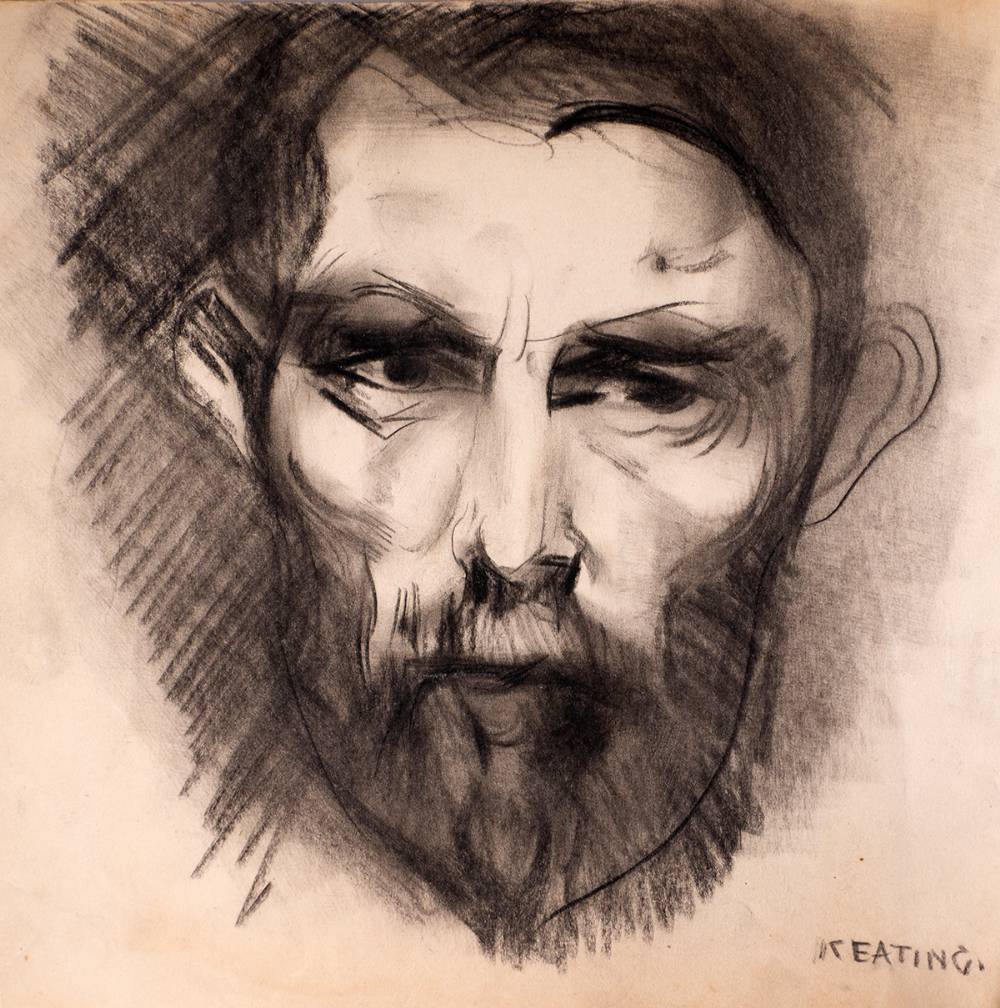
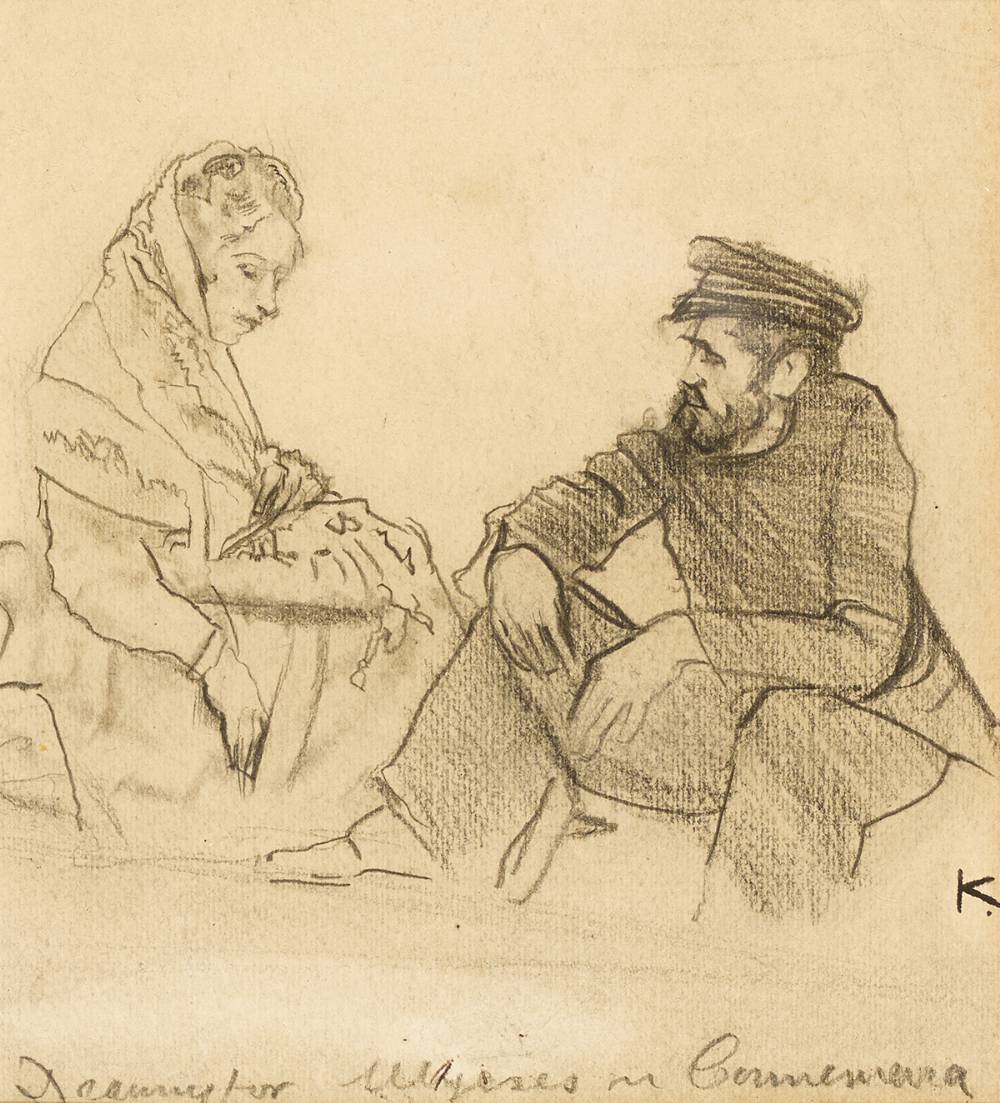
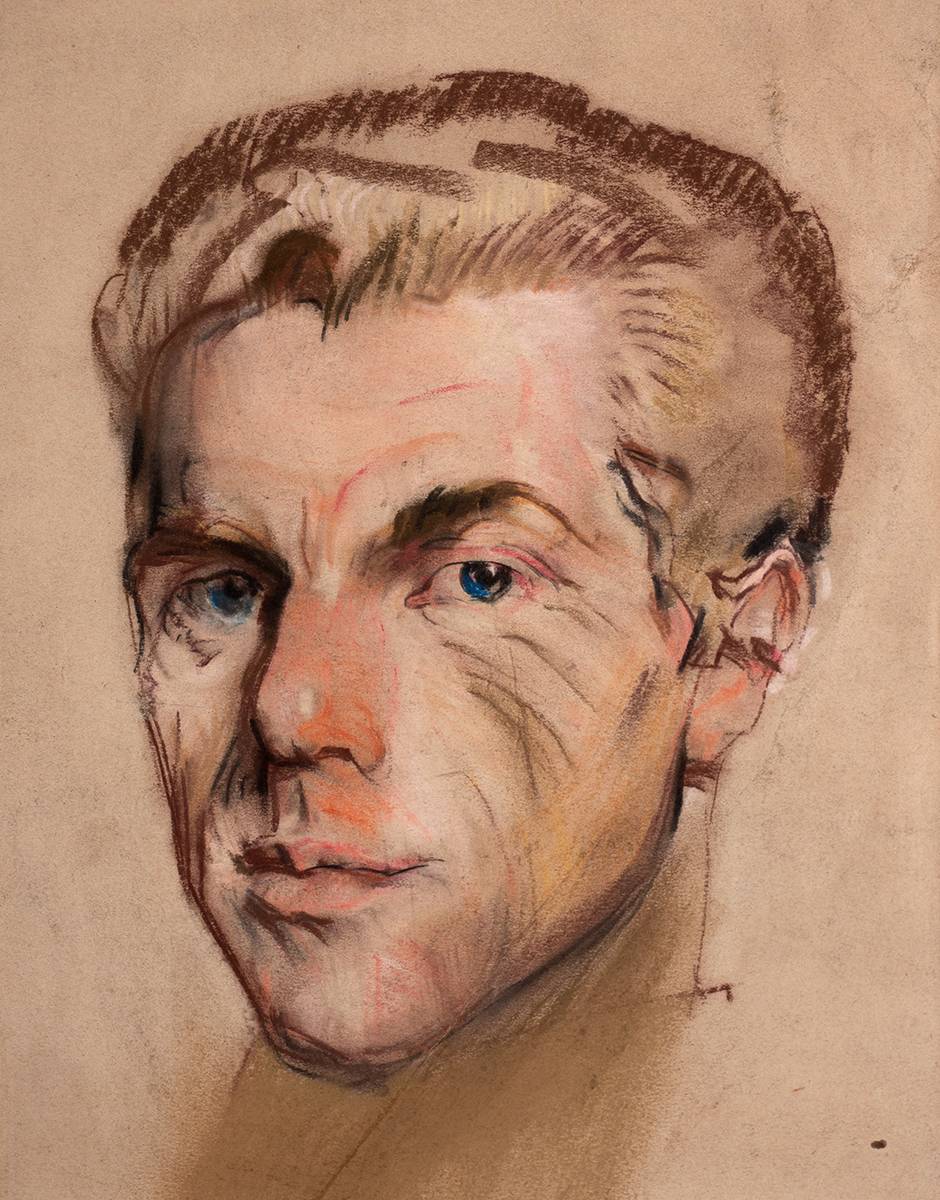
Try LotSearch and its premium features for 7 days - without any costs!
Be notified automatically about new items in upcoming auctions.
Create an alert